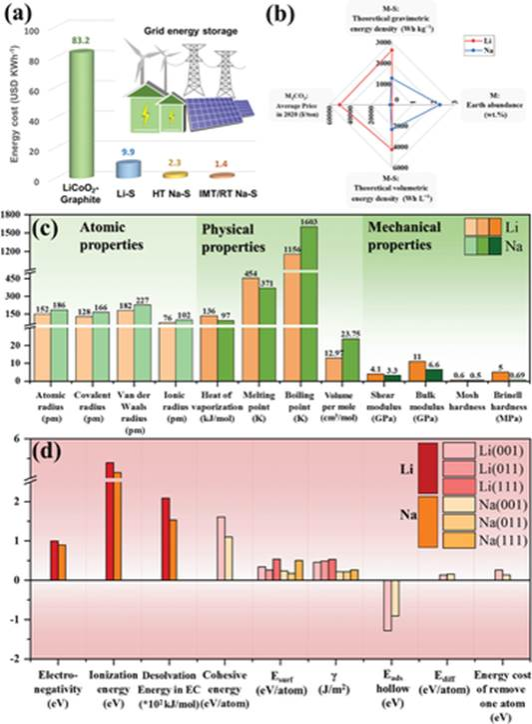我室彭栋梁教授在 Small 上发表论文:Challenge and Strategies in Room Temperature Sodium–Sulfur Batteries: A Comparison with Lithium–Sulfur Batteries
摘要:Metal–sulfur batteries exhibit great potential as next-generation rechargeable batteries due to the low sulfur cost and high theoretical energy density. Sodium–sulfur (Na–S) batteries present higher feasibility of long-term development than lithium–sulfur (Li–S) batteries in technoeconomic and geopolitical terms. Both lithium and sodium are alkali metal elements with body-centered cubic structures, leading to similar physical and chemical properties and exposing similar issues when employed as the anode in metal–sulfur batteries. Indeed, some inspiration for mechanism researches and strategies in Na–S systems comes from the more mature Li–S systems. However, the dissimilarities in microscopic characteristics determine that Na–S is not a direct Li–S analogue. Herein, the daunting challenges derived by the differences of fundamental characteristics in Na–S and Li–S systems are discussed. And the corresponding strategies in Na–S batteries are reviewed. Finally, general conclusions and perspectives toward the research direction are presented based on the dissimilarities between both systems. This review attempts to provide important insights to facilitate the assimilation of the available knowledge on Li–S systems for accelerating the development of Na–S batteries on the basis of their dissimilarities.

文章链接:https://onlinelibrary.wiley.com/doi/10.1002/smll.202107368